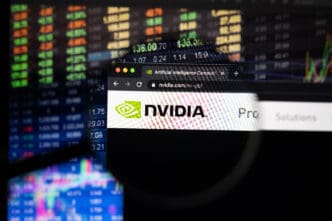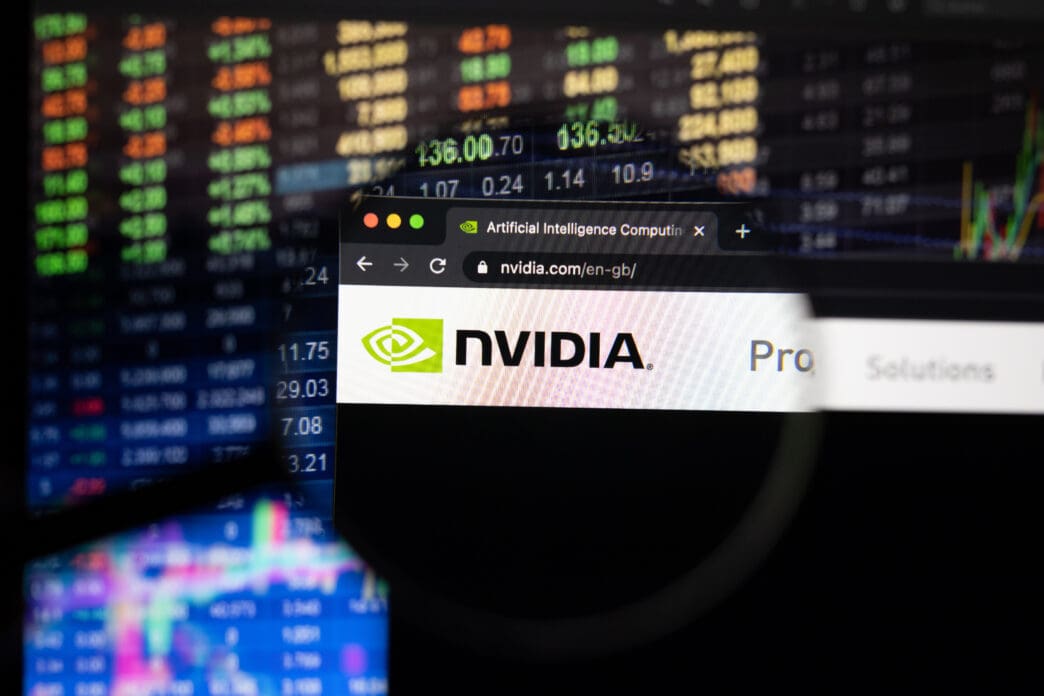Executive Summary
The Story So Far
Why This Matters
Who Thinks What?
Nvidia, a leading producer of discrete GPUs for data centers and a bellwether of the artificial intelligence (AI) market, is facing scrutiny regarding its future stock performance following a rally that saw its shares surge approximately 1,230% over the past five years. As of October 17, 2025, the company holds a market capitalization of $4.5 trillion with its stock priced at $183.38, fueling investor debate over whether its growth trajectory can continue despite its current valuation and emerging geopolitical and competitive challenges.
The Bull Case for Nvidia
Proponents of Nvidia’s stock argue that the company continues to provide essential infrastructure for the expanding AI sector, often likened to selling the “picks and shovels” during a gold rush. Grand View Research forecasts the global AI market to grow at a compound annual growth rate (CAGR) of 31.5% from 2025 to 2035, driven by the continuous development of new AI products and services.
Nvidia maintains a dominant position in the discrete GPU market, controlling over 90% according to JPR, with its AI GPUs recognized as industry leaders. This dominance is further strengthened by its proprietary CUDA (Compute Unified Device Architecture) programming platform. This platform optimizes AI applications for Nvidia’s GPUs, creating a significant barrier for competitors.
While AMD’s cheaper Instinct MI300X GPUs offer some competition in the data center market, Nvidia’s top-tier Blackwell chips are noted for superior performance in most large-scale AI and high-performance computing workloads. The company also secures its market position through strategic partnerships with major cloud providers like Amazon Web Services (AWS), Microsoft Azure, and Alphabet’s Google Cloud.
Analysts project Nvidia’s revenue and earnings per share (EPS) to both grow at a CAGR of 36% from fiscal 2025 to fiscal 2028. Based on these projections, its stock at $183 appears reasonably valued at 30 times next year’s earnings, according to the analysis.
The Bear Case Against Nvidia
Critics of Nvidia’s stock highlight several potential headwinds, including the company’s exposure to international trade conflicts and increasing competition. U.S. regulators first blocked Nvidia from shipping its A800 and H800 data center GPUs to China in late 2023, expanding the ban to include its less powerful H20 variant chips in August. China’s regulators subsequently barred its own companies from purchasing Nvidia’s chips in September, which is expected to significantly reduce sales to China, a market that accounted for 17% and 13% of Nvidia’s revenue in fiscal 2024 and fiscal 2025, respectively.
Furthermore, some of Nvidia’s major customers, including Oracle and OpenAI, have recently entered new AI infrastructure deals with AMD. These agreements suggest a desire among AI companies to diversify their chip suppliers, reduce reliance on Nvidia, and potentially lower long-term expenses with AMD’s more cost-efficient offerings. While AMD remains a distant contender in the AI GPU market, this shift could allow it to gradually erode Nvidia’s market share, mirroring its past challenge to Intel in the x86 CPU market.
A broader concern for the AI market’s growth involves the potential for stricter government regulations. These could encompass issues such as the use of copyrighted materials, the displacement of human workers by AI, and privacy concerns. Such restrictions, combined with a potential economic slowdown, could lead to a reduction in aggressive GPU purchases by large AI companies.
Analyst Outlook
Leo Sun, the author of the analysis, suggests that while Nvidia may not replicate its extraordinary multibagger gains of the past five years, the company is still experiencing substantial growth and appears to be reasonably valued relative to its long-term potential. He advises investors to closely monitor competitive and regulatory challenges, but ultimately concludes that Nvidia’s stock remains a worthwhile investment at its current price levels.







